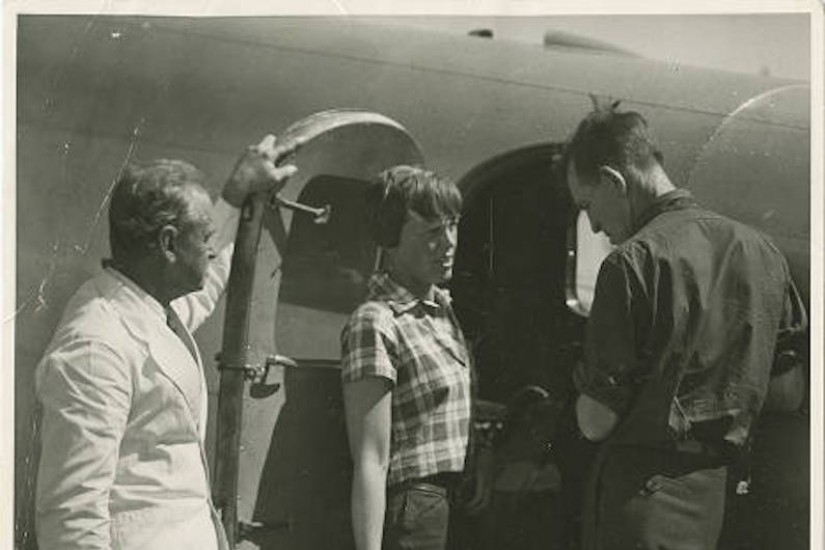Amelia Earhart waded into the Pacific Ocean and climbed into her downed and disabled Lockheed Electra.
She started the engine, turned on the two-way radio and sent out a plea for help, one more desperate than previous messages.
The high tide was getting higher, she had realized. Soon it would suck the plane into deeper water, cutting Earhart off from civilization — and any chance of rescue.
Across the world, a 15-year-old girl listening to the radio in St. Petersburg, Fla., transcribed some of the desperate phrases she heard: “waters high,” “water’s knee deep — let me out” and “help us quick.”
A housewife in Toronto heard a shorter message, but it was no less dire: “We have taken in water .?.?. we can’t hold on much longer.”
That harrowing scene, the International Group for Historic Aircraft Recovery (TIGHAR) believes, was probably one of the final moments of Earhart’s life. The group put forth the theory in a paper that analyzes radio distress calls heard in the days after Earhart disappeared.
In the summer of 1937, she had sought to become the first woman to circumnavigate the globe. Instead, TIGHAR’s theory holds, she ended up marooned on a desert island, radioing for help.
Earhart and her navigator, Fred Noonan, could only call for help when the tide was so low it wouldn’t flood the engine, TIGHAR theorized. That limited their pleas for help to a few hours each night.
It wasn’t enough, TIGHAR director Ric Gillespie told The Washington Post, and the pair died as castaways.
But those radio messages form a historical record — evidence that Gillespie says runs counter to the U.S. Navy’s official conclusion that Earhart and Noonan died shortly after crashing into the Pacific Ocean.
“These active versus silent periods and the fact that the message changes on July 5 and starts being worried about water and then is consistently worried about water after that — there’s a story there,” Gillespie said.
“We’re feeding it to the public in bite-sized chunks. I’m hoping that people will smack their foreheads like I did.”
Some of Earhart’s final messages were heard by members of the military and others looking for Earhart, Gillespie said. Others caught the attention of people who just happened to be listening to their radios when they stumbled across random pleas for help.
Almost all of those messages were discounted by the U.S. Navy, which concluded that Earhart’s plane went down somewhere in the Pacific Ocean, then sank to the seabed.
